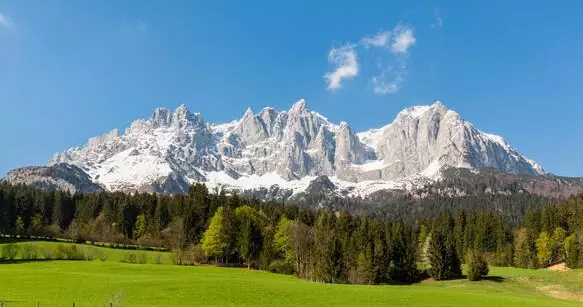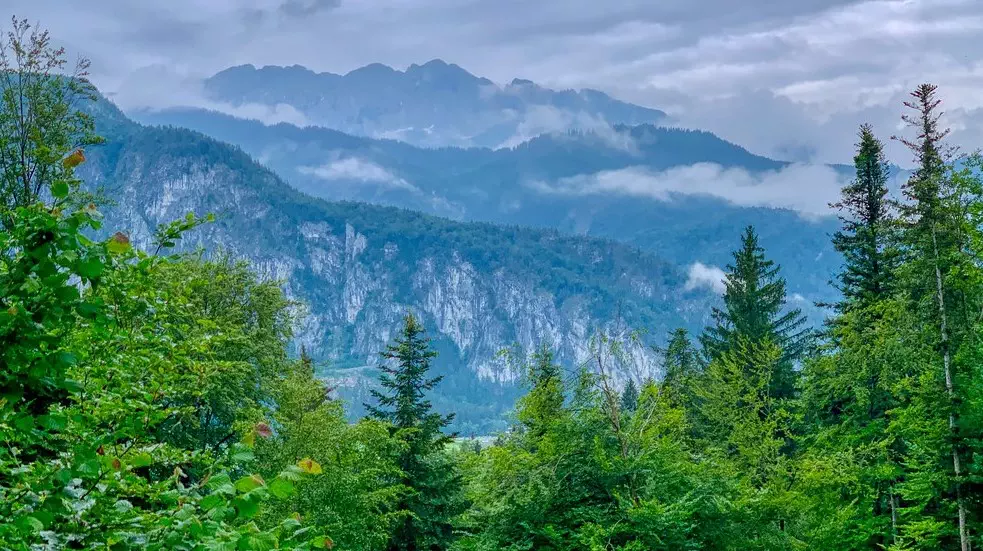17 Interesting Facts About Kaiser Mountains Tyrol [Photos]
The Kaiser mountains Tyrol also known as Kaisergebirge in German (meaning Emperor Mountains) are situated in the Austrian province of Tyrol between the town of Kufstein and the town of St. Johann in Tirol.
They are a mountain range in the Eastern Alps and the Northern Limestone Alps.
The Kaiser Mountains Tyrol offer some of the loveliest scenery in all the Northern Limestone Alps and are a popular destination for both winter and summer activities.
Photos of Kaiser Mountains Tyrol
Here are 17 interesting facts about the mountains
17 Interesting Facts About Kaiser Mountains Tyrol
1. The mountains are divided into 2 main ridges – the Wilder Kaiser or Wild Kaiser chain of mountains (it literally means “Wild Emperor”) that is formed predominantly of bare limestone rock, and the Zahmer Kaiser (also known as “Tame Kaiser”) whose southern side is mainly covered by mountain pine.
2. The Wilder Kaiser and Zahmer Kaiser mountain chains are located at the border between Germany and Austria.
3. Though the Zahmer Kaiser and Wilder Kaiser ridges are linked by the 1,580-metre-high Stripsenjoch pass, they are separated to the east by the Kaiserbach valley and to the west by the valley of Kaisertal.
4. The Kaiser mountains Tyrol extends for about 14 km (8.7 mi) from north to south 20 km and about (12 mi) in an east-west direction, spanning a total area of about 280 square kilometres (110 sq mi).
5. At 2,344 metres (7,690 ft), Ellmauer Halt in the borough of Kufstein, located in the Wilder Kaiser, is the highest elevation in the mountains.
6. There are about 40 other summits, including many well-known climbing peaks such as the Fleischbank, Totenkirchl, Karlspitzen, Goinger Halt, Maukspitze, Predigtstuhl and Ackerlspitze.
7. In the 1920s, nature lovers such as Franz Nieberl and the “Emperor Pope” called for greater protection of the Kaiser mountains Tyrol.
The main goal of this protection drive was to prevent over development of the mountains by cable cars and roads.
8. In 1961, following a referendum, it was agreed to establish a nature reserve.
The reserve was officially opened on 19th April 1963. It covered all the peaks of the Kaiser mountains Tyrol (i.e. Wilder and Zahmer Kaiser) and has an area of 102 square kilometres (39 sq mi).
It lies within the territories of the municipalities of Kufstein, St. Johann in Tirol, Ebbs, Ellmau, Going, Kirchdorf in Tirol, Scheffau and Walchsee.
Its height ranges from 480 m up to 2344 m at the summit of the Ellmauer Halt.
9. The only man-made lift in the protected area is the chair lift to the Brentenjoch saddle.
10. The Kaiser mountains Tyrol has about 940 different flowering plants, 38 different species of fern and over 400 different species of mosses.
11. The forest region comprises mainly mixed forests with spruce, fir and beech.
12. The Kaiser is part of the Northern Limestone Alps and consists mainly of dolomite and Wetterstein limestone.
13. The first dated evidence of human settlement in the Kaiser mountains Tyrol goes back 4000 to 5000 years.
There are discoveries of the remains of Stone Age hunters in the Tischofer Cave.
14. Tourism in the area began in the second half of the 19th century.
15. Though the majority of documented first ascents of the summits of the Kaiser mountains Tyrol date back to the 19th century, there is a very high probability that most of the peaks had already been climbed by local herders and poachers.
16. In the 1970s and 1980s, a new range of extremely difficult sport climbing routes was opened in the Kaiser mountains Tyrol.
The most difficult to date is “The Emperor’s New Clothes” route (Des Kaisers neue Kleider, grade X+) by Stefan Glowacz on the Fleischbank pinnacle.
17. There are plenty of fun outdoor activities that tourists can enjoy in the surrounding resorts e.g. canyoning & rafting, rock climbing, skiing, cycling, golf, hiking, horseback riding, ice skating, paragliding, swimming, tennis, tobogganing, trail running and tyrolean curling, just to mention a few.
Conclusion on the Kaiser Mountains Tyrol
In conclusion, the Kaiser mountains Tyrol are a stunning natural wonder that is definitely worth a visit.
With its lush forests, majestic mountain peaks and pristine lakes, it’s easy to see why it’s so popular with tourists.
So if you’re looking for a breathtaking destination to add to your travel itinerary, be sure to put the Kaiser mountains Tyrol at the top of your list.






